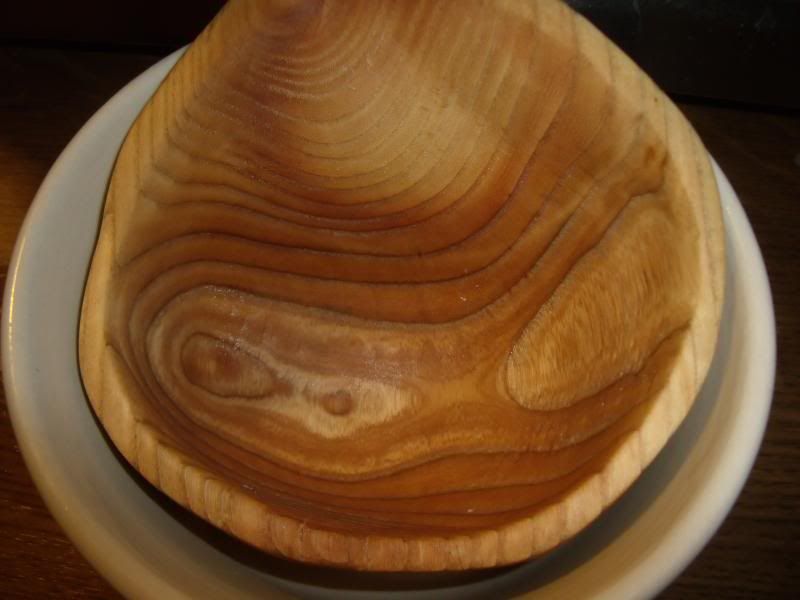milk treating for wood question
- Thread starter John Fenna
- Start date
-
Hey Guest, Early bird pricing on the Summer Moot (29th July - 10th August) available until April 6th, we'd love you to come. PLEASE CLICK HERE to early bird price and get more information.
You are using an out of date browser. It may not display this or other websites correctly.
You should upgrade or use an alternative browser.
You should upgrade or use an alternative browser.
That's come out brilliant. I really like that. Is there any downside too useing milk. I can't believe it's not used more when the results are so good. Thanks for posting this and the pics John.
This morning I have had a look at the milk treated wood and I am happy to say that it is looking good.
Despite the fact that the wood seems totally dry the darkness of the wood has not faded, there is no odour and the wood seems proof against penetration by both cold and boiling water.
I think that - where practical - my treatment for any cups and bowls I make in the future will be as follows.
Once the wood is dry after it has been carved I will put it in a pan with enough cold full milk to cover it then boil/simmer it for 2 hours.
I will then let the item sit, full of the hot milk, until it is cold. Once cold I will remove any excess milk from the surface and buff the wood to a deep, warm, glow.
Job done!
It could be that it does not need the 2 hours or the sitting full of milk until cold but my research has suggested this is the best way forward for full penetration and avoiding cooling cracks and it seems to work!
Note the remains of some milk solids around the Kuksa handles - needing a thumbnail to scratch them off!

Despite the fact that the wood seems totally dry the darkness of the wood has not faded, there is no odour and the wood seems proof against penetration by both cold and boiling water.
I think that - where practical - my treatment for any cups and bowls I make in the future will be as follows.
Once the wood is dry after it has been carved I will put it in a pan with enough cold full milk to cover it then boil/simmer it for 2 hours.
I will then let the item sit, full of the hot milk, until it is cold. Once cold I will remove any excess milk from the surface and buff the wood to a deep, warm, glow.
Job done!
It could be that it does not need the 2 hours or the sitting full of milk until cold but my research has suggested this is the best way forward for full penetration and avoiding cooling cracks and it seems to work!
Note the remains of some milk solids around the Kuksa handles - needing a thumbnail to scratch them off!

Nice one John, be interesting to see how it performs in the long term.
What milk did you use, skimmed, semi or full?
What milk did you use, skimmed, semi or full?
I used full fat the usual recommendation it the recipes for casein treatment that I found - though some recipes say to use skimmed ... I do not know if the fat content is an issue as we are after the protein... I think....
I do not know if the fat content is an issue as we are after the protein... I think....
I think that is right.
I treated a kuksa with milk today. I boiled up some milk this morning and let it simmer for a while to denature all the casein. I then poured it into the cup and left it untill I came back home in the evening. I think it has been in there for a good 9 hours (and that is longer than needed. Leaving it to cool down is more than good enough). After pouring the milk out and rubbing the residu off the inside of the cup is a little darker and shinier than it was. There is no smell and water stays clear and tasteless in it so I suppose it was a succes. I apolagize for the bad pictures but figured building up some documentation of this technique is a good idea.
Before:
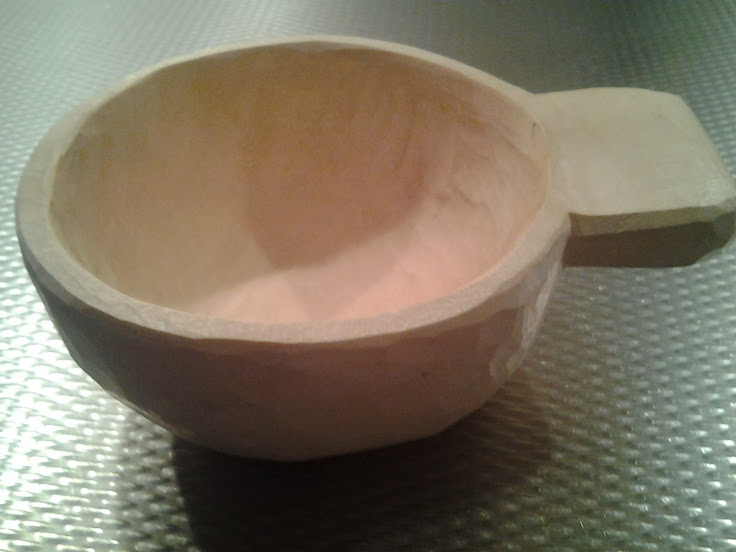
Hot milk goes in:
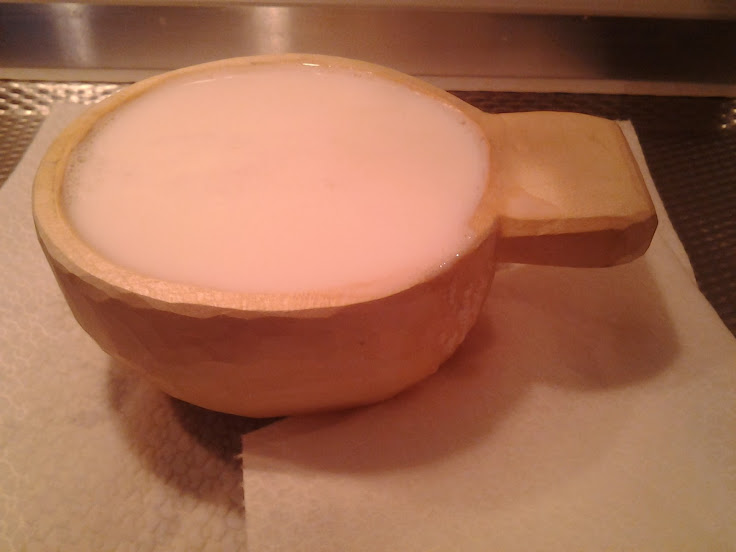
And afterwards:
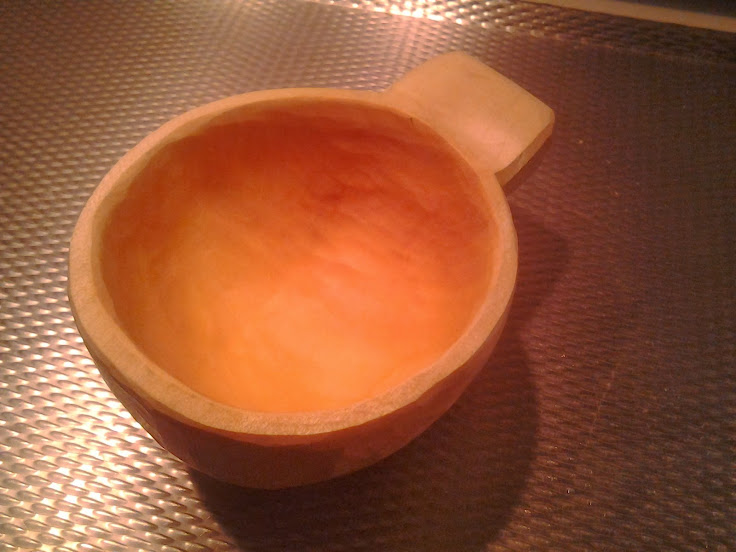
I also boiled one out of a set of three spreaders in milk for a good 10 minutes to see the difference between boiled and unboiled wood. The bottom one in the picture is the boiled one.
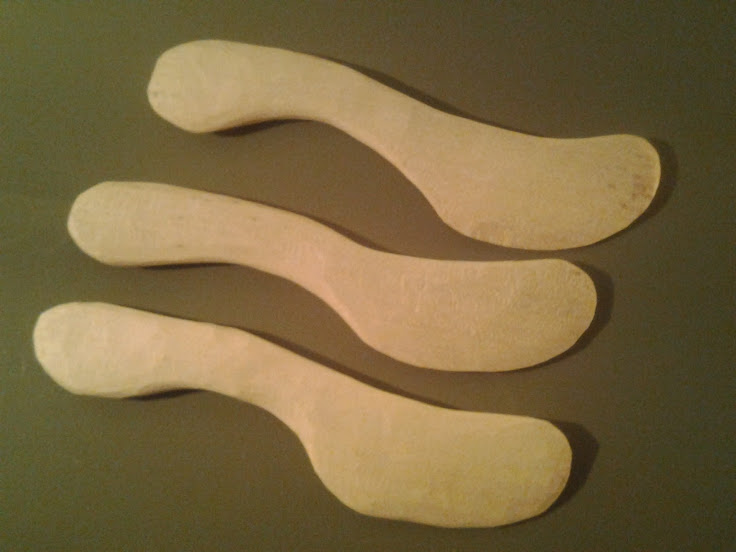
There is not that much difference. The only thing is that the rippling in the grain became a little less visible.

For a spreader the milk method is completely unnecessary, but it was a nice way to see the difference the treatment makes on wood. In the bow of the kuksa the difference is a bit larger since there is a lot of endgrain there that is more accesible. I think I`ll keep using this method to seal grain in cups that will get used for spirits and/or coffee. Easy and effective.
How are your treated kuksas holding up John?
Before:

Hot milk goes in:

And afterwards:

I also boiled one out of a set of three spreaders in milk for a good 10 minutes to see the difference between boiled and unboiled wood. The bottom one in the picture is the boiled one.

There is not that much difference. The only thing is that the rippling in the grain became a little less visible.

For a spreader the milk method is completely unnecessary, but it was a nice way to see the difference the treatment makes on wood. In the bow of the kuksa the difference is a bit larger since there is a lot of endgrain there that is more accesible. I think I`ll keep using this method to seal grain in cups that will get used for spirits and/or coffee. Easy and effective.
How are your treated kuksas holding up John?
Similar threads
- Replies
- 3
- Views
- 370
- Replies
- 31
- Views
- 1K




